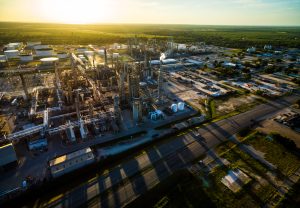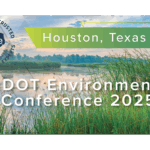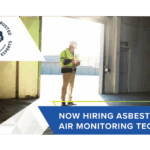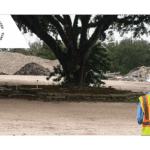
Phase 2 Environmental Site Assessments (ESAs) play a vital role in evaluating the environmental condition of a property. In this article, we will delve into the key aspects of Richardson Phase 2 ESAs, exploring their purpose, process, the role of environmental professionals, the interpretation of assessment results, and the legal and regulatory aspects associated with these assessments.
Understanding Phase 2 Environmental Site Assessments
Phase 2 ESAs are conducted to further investigate the potential presence of hazardous substances or contaminants in soil, groundwater, or building materials. While Phase 1 ESAs provide a preliminary evaluation, Phase 2 assessments aim to confirm the presence or absence of contamination and assess its impact on the property and surrounding environment.
The Purpose of Phase 2 Assessments
The primary purpose of a Phase 2 ESA is to collect samples for laboratory analysis to confirm the presence of contaminants. It also helps to evaluate the extent and concentration of these substances to determine the level of risk they pose to human health and the environment.
Key Components of Phase 2 Assessments
A Phase 2 ESA comprises several key components that work together to provide a comprehensive understanding of the environmental conditions:
- Site history review: This involves gathering historical information about the property and its surrounding area, such as previous land use, potential sources of contamination, and nearby hazardous sites.
- Initial site inspection: During this phase, environmental professionals visually inspect the property for signs of contamination, such as staining, odors, or improperly stored chemicals.
- Sampling and analysis: Environmental professionals collect samples of soil, groundwater, and building materials to determine the presence and concentration of contaminants. These samples are then sent to accredited laboratories for analysis.
- Risk evaluation: The collected data is evaluated to assess the potential risk these contaminants pose to human health and the environment. This evaluation takes into account factors such as exposure pathways and sensitive receptors.
Once the samples are collected, they undergo a rigorous analysis process in accredited laboratories. Highly trained scientists and technicians use advanced techniques and equipment to identify and quantify the contaminants present in the samples. This analysis provides crucial information about the nature and concentration of the substances, allowing for a more accurate assessment of the potential risks.
Furthermore, Phase 2 assessments often involve conducting interviews with current and past property owners, tenants, and neighbors to gather additional information about the site’s history and potential sources of contamination. These interviews can provide valuable insights and help in identifying any potential risks that may not be immediately apparent during the initial site inspection.
It is important to note that Phase 2 ESAs are not limited to just one round of sampling and analysis. In some cases, if the initial results indicate the presence of contaminants, further investigation may be necessary to fully understand the extent and impact of the contamination. This may involve additional sampling at different depths or locations, as well as more detailed analysis techniques to assess the potential migration of contaminants.
Overall, Phase 2 Environmental Site Assessments play a critical role in identifying and evaluating potential environmental risks associated with a property. By providing a detailed understanding of the contaminants present and their potential impact, these assessments help inform decision-making processes regarding property transactions, development projects, and remediation efforts.
The Process of Richardson Phase 2 Environmental Site Assessments
The process of Richardson Phase 2 ESAs involves multiple stages, starting from the initial site inspection and culminating in the risk evaluation. Let’s explore each stage in detail:
Initial Site Inspection
During the initial site inspection, environmental professionals visually assess the property, searching for visible signs of contamination. This inspection helps identify potential areas that require further investigation and sampling.
Sampling and Analysis
Once potential areas of concern are identified, environmental professionals collect samples of soil, groundwater, and building materials. These samples are carefully sealed and preserved to prevent any cross-contamination. The samples are then sent to accredited laboratories, where they undergo rigorous analysis to determine the presence and concentration of contaminants.
Risk Evaluation
After obtaining the laboratory results, environmental professionals evaluate the data to assess the level of risk associated with the identified contaminants. This evaluation considers factors such as exposure pathways, contaminant concentrations, and applicable regulatory standards. By understanding the potential risks, stakeholders can make informed decisions regarding the property’s future use or remediation.
The Role of Environmental Professionals in Phase 2 Assessments
Environmental professionals play a crucial role in the successful execution of Phase 2 assessments. Their qualifications, responsibilities, and duties significantly influence the accuracy and reliability of the assessment results.
Qualifications of Environmental Professionals
Environmental professionals involved in Phase 2 assessments should possess relevant qualifications and experience in conducting environmental investigations and risk assessments. This typically includes a thorough understanding of environmental science, regulations, and laboratory protocols.
Responsibilities and Duties
Environmental professionals are responsible for overseeing each stage of the Phase 2 ESA process. Their duties may include site inspections, sample collection, coordination with laboratories, data analysis, and preparation of comprehensive assessment reports. Their expertise ensures that assessments adhere to regulatory requirements and are conducted accurately and reliably.
Interpreting the Results of Richardson Phase 2 Assessments
Interpreting the results of Richardson Phase 2 assessments is crucial for making informed decisions about the property’s future use or remediation efforts. Let’s explore two key aspects of result interpretation:
Understanding the Report
The assessment report presents the findings of the Phase 2 ESA in a detailed and comprehensive manner. It includes information about the sampled areas, laboratory results, risk evaluation, and recommended actions. A thorough understanding of the report helps stakeholders comprehend the extent of contamination and any risks associated with the property.
Implications of Assessment Findings
The assessment findings have significant implications for property owners, potential buyers, and regulatory agencies. Depending on the identified contaminants and their concentrations, further actions such as remediation or additional investigations may be necessary. Stakeholders should carefully consider and evaluate these findings to determine the appropriate path forward.
Legal and Regulatory Aspects of Phase 2 Assessments
Richardson Phase 2 assessments are subject to various legal and regulatory requirements, ensuring compliance with environmental laws. Let’s explore two important aspects of the legal framework:
Compliance with Environmental Laws
Phase 2 assessments must adhere to applicable federal, state, and local environmental regulations. These laws aim to protect human health and the environment, requiring property owners and stakeholders to meet certain standards and obligations when dealing with contaminated sites.
Potential Legal Consequences
Failure to comply with environmental laws can result in significant legal consequences. Violations may lead to penalties, fines, or even litigation. By conducting Phase 2 assessments and addressing any identified contamination proactively, stakeholders can mitigate the risk of legal repercussions and demonstrate their commitment to environmental stewardship.
In conclusion, Richardson Phase 2 Environmental Site Assessments provide valuable insights into the environmental condition of a property. Understanding the purpose, components, and process of these assessments, along with the role of environmental professionals, result interpretation, and legal aspects, is essential for informed decision-making and regulatory compliance. By incorporating Phase 2 assessments into property evaluations, stakeholders can ensure the responsible management of environmental risks and contribute to a safer and more sustainable future.
If you’re facing environmental challenges or require a thorough Phase 2 Environmental Site Assessment, look no further than ESE Partners. Our team of skilled environmental engineers and scientists is equipped to provide you with comprehensive assessment, remediation, and compliance services tailored to your unique needs. With a commitment to environmental stewardship and a promise to deliver opportunity while enhancing community quality of life, ESE Partners is your trusted partner in responsibly moving your business forward. Don’t hesitate to take the next step in managing your environmental risks. Request A Proposal today and let us help you navigate the complexities of environmental regulations with our innovative and sustainable solutions.








